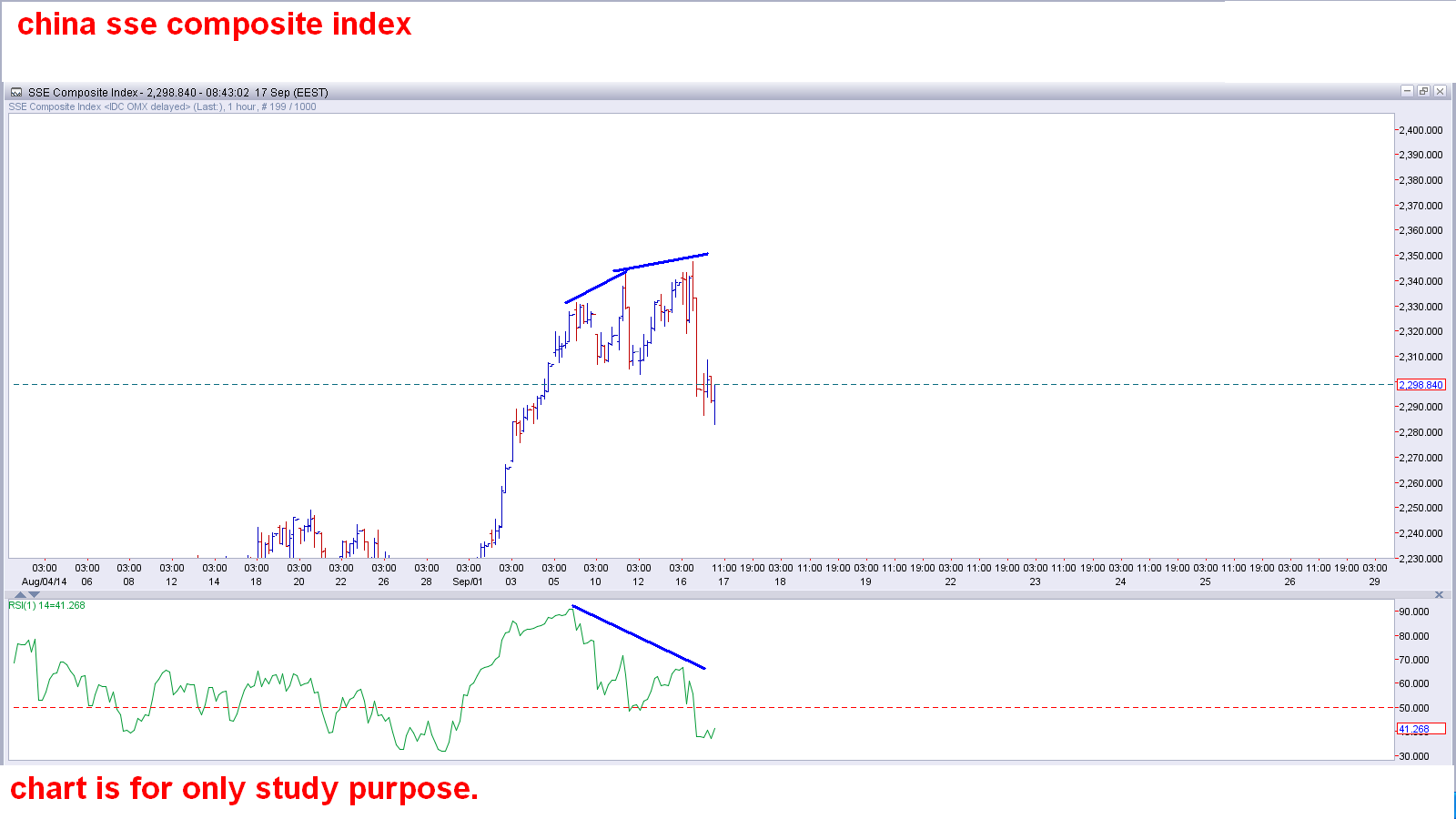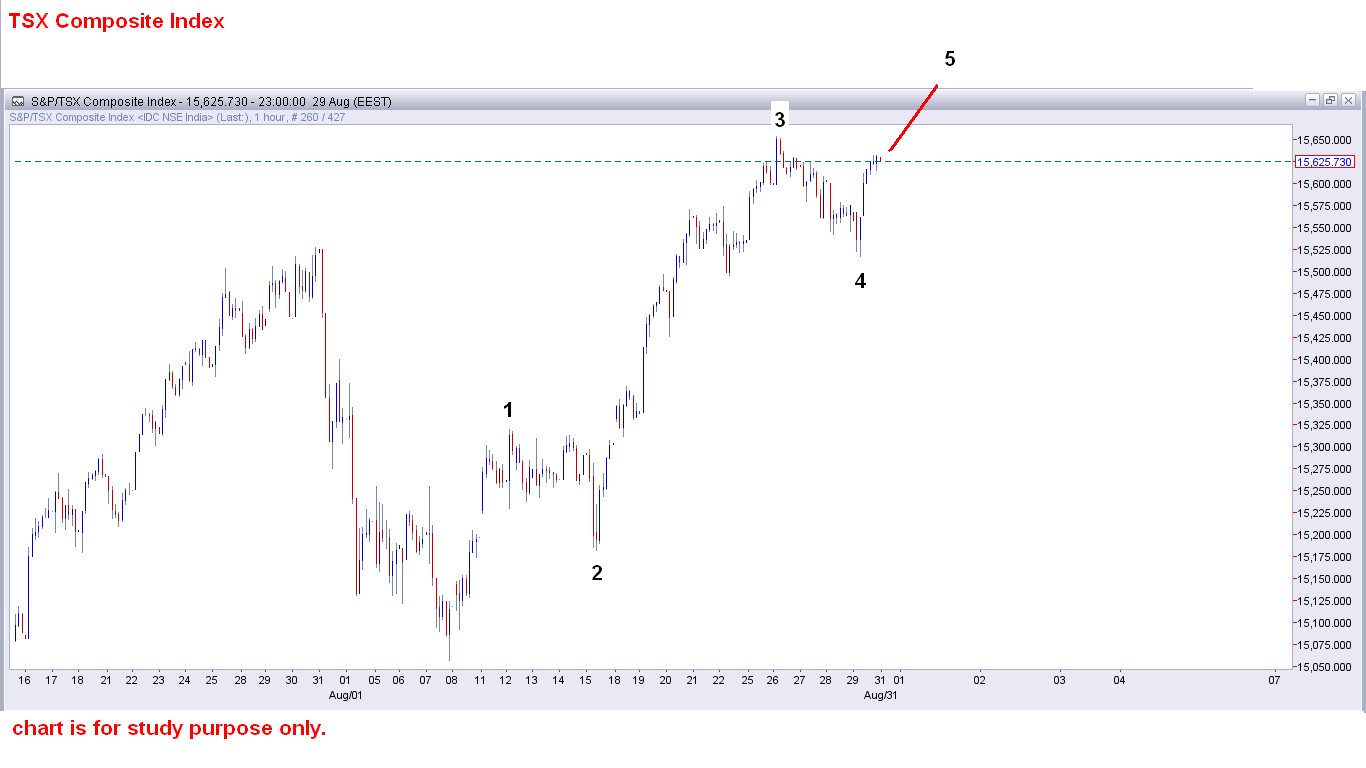Thursday, December 18, 2014
Monday, December 15, 2014
What is the Wave Principle?
What is the Wave Principle?
The Wave Principle is, first and foremost, a detailed description of how markets behave. It’s a study of how human beings interact collectively in the trading arena. It’s also called the purest form of technical analysis because it objectively measures the true market impetus.
The Wave Principle is, first and foremost, a detailed description of how markets behave. It’s a study of how human beings interact collectively in the trading arena. It’s also called the purest form of technical analysis because it objectively measures the true market impetus.
Tuesday, November 25, 2014
Thursday, November 20, 2014
Wednesday, November 12, 2014
The Top Technical Indicators For Options Trading
There are three important things while trading option.
- Range of movement (How much - volatility),
- Direction of the move (Which way) and
- Duration of the move (How long - time)
Bollinger band (expansion and contraction of upper band and lower)
Relative Strength Index (cycle between 60/40 zone or overbought/oversold zone)
MACD (direction of trend)
for any query write in contact me box on right side bar.
get our update on your inbox directly by subscribing our mail service on right side bar.
like us on facebook and get update directly on fb page.>>>www.facebook.com/NiftyElliottWave
Tuesday, November 11, 2014
Monday, November 3, 2014
Wednesday, October 29, 2014
Tuesday, October 28, 2014
Sunday, October 26, 2014
Tuesday, October 21, 2014
Saturday, October 18, 2014
Friday, October 17, 2014
Wednesday, October 8, 2014
Thursday, October 2, 2014
Wednesday, September 17, 2014
Monday, September 15, 2014
Sunday, September 14, 2014
Nifty strength less or power pack ???
 |
| Advance/Decline |
Advance - decline line tells the clear picture ahead,less number of advance creating weak strength.
advance - decline line always shows great strength about market.
above chart clear your next trade with the help of a/d line.
Friday, September 5, 2014
Thursday, September 4, 2014
cac 40 elliott wave count
 |
| cac 40 index |
As per elliott wave principle cac40.
cac 40 index A-B-C zigzag gets over. preferred wave count i-ii , (i)-(ii) moving in wave 3 extension.
alt wave count flat in larger wave count sub divide in (3-3-5).or moving towards new high.
more update soon....
stay connected with the blog www.niftyelliottwave.blogspot.com
Monday, September 1, 2014
Using the Ichimoku Cloud
The Ichimoku Kinko Hyo Chart,
A multi-faceted indicator designed to give support/resistance levels, trend direction, and entry/exit points of varying strengths. General theory behind this indicator states that if price action is above the cloud, the overall trend is bullish, and if below the cloud, the overall trend is bearish. There are also moving averages (the Tenkan and Kijun lines) which act like the MACD crossover signals with the Tenkan crossing from underneath the Kijun as a bullish signal, while crossing overhead giving a bearish signal.
|

Use
Commonly used in Japanese trading rooms, Ichimoku is often applied to establish the trend for a pair and detect trend breakouts. It is decent during range bound markets and like most indicators performance often improves when used over longer time frames.



History
The Ichimoku Cloud was originally called the ‘Ichimoku Kinko Hyo.’ Where Ichimoku means ‘one glance,’Kinko ‘balance’ and Hyo ‘chart.’ Thus the full translation could best be described as ‘one glance balanced chart.’ Originally developed by Goichi Hosada pre WWII, a newspaper journalist (published in 1969) who wanted to develop an Uber-indicator that could provide the trader with various levels of support/resistance, entry/exit points, direction of the trend, and strength of the signal.
Kumo, the Ichimoku Cloud
It later became known as the ‘Ichimoku Cloud’ since the most characteristic feature of the indicator is the cloud (Kumo), which is designed to represent various levels of support and resistance. In developing the cloud, Hosada realized support/resistance levels were not single lines drawn in the sand, since traders were often placing their trades at various distances from the support levels. Thus, since support was many layers deep from the offers/bids around the level, he created a cloud to represent the past levels of support/resistance. The cloud is composed of the two Senkou Span lines (A&B or 1&2) which are pushed forward in time, and when the area between them is shaded in, it makes a cloud-like shape. The most basic theory of this indicator is that if the price is above the cloud, the overall trend is bullish while below the cloud is bearish, and in the cloud is non-biased or unclear. Lastly, when the price is above the cloud, then the top of the cloud will act as a general support level, and when price is below, the cloud base will act as resistance. But remember the cloud has thickness, and thus resistance does as well, which by making these thicker reduces the risk of a false breakout.

Tenkan & Kijun Lines
The indicator goes much further than this, with using two moving average lines; the Tenkan Line and the Kijun Line, which are 9 and 26 day moving averages (exponential). The Tenkan Line is really the conversion line which is when crosses the Kijun line from underneath, is indicative of a bullish signal. When it crosses over the Kijun line from above pointing downward, it becomes indicative of a bearish signal.

Chikou Span
There is also one last line called the Chikou Span, which is representative of today’s price moved back 26 periods ago. This is where the strength of the signal comes in. If you have a bearish signal (downward crossover of the Tenkan over the Kijun) and the Chikou Span is below the base, then the signal strength increases. If you have a bullish crossover (Tenkan crosses the Kijun from underneath) and the Chikou Span is above the cloud top, then the signal strength increases.

There is one last metric for the strength of the signal and confirmation for your buy/sell signal. If the crossover of the two lines (Tenkan & Kijun) occurs above the cloud, then the bullish signal strength increases and is further confirmation. If the crossover occurs below the cloud, then the bearish signal intensifies and is further confirmation. Medium buy/sell signals occur when the crossover takes place in the cloud, and weak occurs when the bullish crossover is below the cloud, while a weak bearish signal occurs above the cloud.
Signal Types
Strong Bullish Signal


Medium Bullish Signal


Weak Bullish Signal


Clearly there are many different combinations of signals from Ichimoku, and each variable affects the strength of the signal. The numerous combinations will leave some discretion to the seasoned trader.
Formulas
• Tenkan Line; (highest high + lowest low)/2 calculated over last 9 periods.
• Kijun Line; (highest high + lowest low)/2 calculated over last 26 periods.
• Chikou Span; (most current closing price plotted 26 time periods back.
• Senkou Span A; (Tenkan line + Kijun Line)/2 plotted 26 time periods ahead
• Senkou Span B; (highest high + lowest low)/2 calculated over past 52 time periods, sent 26 periods ahead.
Other related search terms: Ichimoku Kinko Hyo, Tenkan-sen, Kijun-sen, Senkou Span A, Senkou Span B, Ichimoku Cloud
Source: www.fxwords.com
Saturday, August 30, 2014
Thursday, August 28, 2014
Saturday, August 23, 2014
Saturday, August 16, 2014
commodity channel index
Learn how to Trade commodity channel index
join our free update on elliott wave study on world index,stock,currency,commodities and technical analysis tutorial through mail. enter your email id in our get latest update by mail box in right side on web page.
like us www.facebook.com/NiftyElliottWave
Tuesday, August 12, 2014
ise national 100 index (turkey elliott wave count)
 |
| turkey index |
ise national moving in correction at largere degree wave, sub wave b may retrace 61.8% of wave a.
wave a is near an end wave b will likely move soon in higher side.
more update soon...
join our free update on elliott wave study on world index,stock,currency,commodities and technical analysis tutorial through mail. enter your email id in our get latest update by mail box in right side on web page.
like us www.facebook.com/NiftyElliottWave
Saturday, August 9, 2014
china elliott wave count (sse composite index)
sse composite index moving in 5 wave advance. wave 4 will remain in corrective mode.
very soon new high will take place in china.
more update soon....
join our free update on elliott wave study on world index,stock,currency,commodities and technical analysis tutorial through mail. enter your email id in our get latest update by mail box in right side on web page.
like us www.facebook.com/NiftyElliottWave
Friday, August 8, 2014
Thursday, August 7, 2014
Subscribe to:
Posts (Atom)










